
In Latin America, Enel's Spanish unit Endesa is seeking to develop 700 megawatts of renewable capacity in Brazil and 500 megawatts in Chile by 2017.

|
|
 Enel Green Power, controlled by Italy's Enel, Europe's No. 2 utility, is shifting more of its investments away from Italy and Spain to emerging economies, according to Reuters. In Latin America, Enel's Spanish unit Endesa is seeking to develop 700 megawatts of renewable capacity in Brazil and 500 megawatts in Chile by 2017. 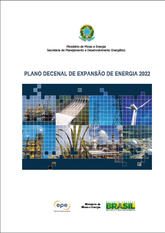 The Brazilian government has released the latest Ten Year Energy Expansion Plan (PDE 2022) for public consultation. Comments are due by November 10 (send to [email protected]). 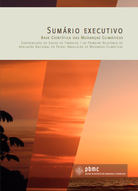 Climate change projections indicate that rainfall in the Amazon could decrease 40-45% by the end of the century if temperatures rise 5 ° to 6 ° C, according to a new report released this week by the Brazilian Panel on Climate Change, a national scientific body that gathers, synthesizes, and evaluates scientific information on climate change. Climate scenarios also suggest a future increase in extreme and prolonged drought events, especially in the Amazon, Cerrado and Caatinga regions. The implications of these projections are profound: The most biodiverse rainforest in the world could turn into a savanna, and such a dramatic decrease in rainfall would severely impact hydropower production. (More than 90% of new large hydro in Brazil is planned for the Amazon). This report will likely add to the intense debate around Brazil's hydropower expansion program and its social, environmental, and economic impacts  Mauricio Tolmasquim, chief of the Brazilian government's Energy Research Company, EPE, told Reuters it was "unlikely" the government would proceed with plans to build four new nuclear plants by 2030 to meet rising demand for electricity. 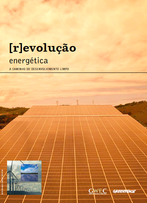 The latest edition of Greenpeace's Energy Revolution study for Brazil (in Portuguese) offers an ambitious outlook for the development of solar photovoltaic (PV). The report projects that the country could install as much as 2.8 GW of photovoltaic solar capacity by 2020, up to 24 GW by 2030, and up to 100 GW by 2050. (More on Brazil's solar PV outlook here). Overall, the study projects that the country's electricity mix in 2050 could consist of hydropower (40%), wind (21%), solar PV (13%), solar thermal (10%), biomass (7%), natural gas (7 %), and tidal (1%). 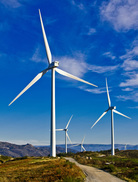 Brazil's latest wind-power auction contracted new wind power generating capacity for an average price of 110.51 Brazilian reais ($46.37) per megawatt-hour. About 1,500 megawatts of new generating capacity is set to come online by September 2015 and supply backup energy to Brazil's national electricity grid for a period of 20 years. The wind farms will require an estimated investment of about BRL5.46 billion. This was the first wind-power auction that operated under stricter rules, according to the Wall Street Journal. To participate, companies had to have access to existing transmission networks.  Brazil has approved 377 wind projects with a total combined installed capacity of 9 GW to participate at the upcoming wind power auction on August 23, 2013, according to the Energy Planning Agency (EPE). Wind developers will compete for 20-year contracts with delivery starting on January 2015 and a ceiling price of BRL 117/MWh ($50/MWh). 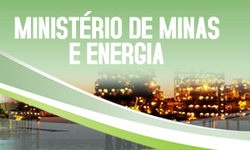 Wind and solar are among the sources eligible to take part in the "A-3" power tender scheduled for October 25, 2013 [UPDATE: November 18, 2013] – alongside large- and small-hydro projects, and gas-fired and biomass plants, according to multiple news reports. It is unclear whether the generation sources will compete with each other or be separated into individual contests. This will be the first time that solar projects will compete in a national public tender. Only projects of more than 5MW are allowed to participate, according to Recharge. Official notices (in Portuguese) here. 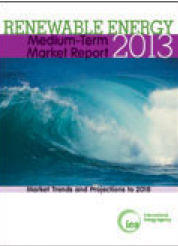 Power generation from renewable sources worldwide will exceed that from gas and be twice that from nuclear by 2016, according to the International Energy Agency's (IEA) second annual Medium-Term Renewable Energy Market Report (MTRMR). Despite a difficult economic context, renewable power is expected to increase by 40% in the next five years. The share of non-hydro sources such as wind, solar, bioenergy and geothermal in total power generation will double, reaching 8% by 2018, up from 4% in 2011 and just 2% in 2006. In statements at the Renewable Energy Finance Forum in New York last week, IEA Executive Director Maria van der Hoeven warned that “policy uncertainty is public enemy number one” for investors: “Many renewables no longer require high economic incentives. But they do still need long-term policies that provide a predictable and reliable market and regulatory framework compatible with societal goals,” she stated. “And worldwide subsidies for fossil fuels remain six times higher than economic incentives for renewables.” The report shows that renewables are becoming cost-competitive in a wider set of circumstances. For example, wind competes well with new fossil-fuel power plants in several markets, including Brazil, Turkey and New Zealand. Solar is attractive in markets with high peak prices for electricity, for instance, those resulting from oil-fired generation. Decentralised solar photovoltaic generation costs can be lower than retail electricity prices in a number of countries. 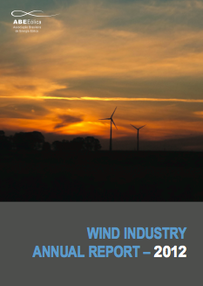 The Brazil wind industry's annual report projects that Brazil will have 8.8 GW of cumulative installed wind power capacity by 2017, more than three times the current capacity of 2.5 GW. The new projects are expected to attract more than $10 billion in investment from 2013 to 2017. Published by ABEEólica, the Brazilian Wind Power Association, the report provides data on generation capacity, capacity factor, economic benefits, and CO2 emissions avoided. Notably, capacity factor for "Phase 2" wind farms (those contracted after 2009) averaged 54% in 2012, compared to earlier "Phase 1" wind farms, which averaged 27%, according to the report. The main difference between Phase 1 and Phase 2 relates to the technological advances in wind turbines. |
Categories
All
Archives
January 2025
Blogroll
|
|
© 2013 - 2025 InterAmerican Clean Energy Institute, a project of Earth Ways Foundation Inc, a 501(c)3 nonprofit organization.
|
Web Hosting by iPage
|